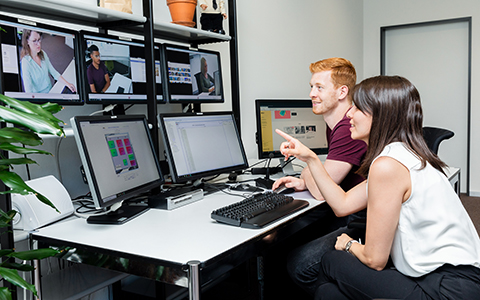UX/usability evaluation using eye tracking for work systems
Eye tracking was used to evaluate whether workstations are arranged so that tasks can be performed effectively and efficiently.
Eye Tracking records the eye and gaze movements of people. In the case of air traffic controllers, we used eye tracking to investigate the influence of changing the workstation on the work activity and which setting is more suitable for performing the tasks, for instance by changing the arrangement or by adding or removing certain system elements.
For confidentiality reasons, details cannot be discussed here. However, it is generally important in workplaces to consider ergonomics, efficiency, and effectiveness. For example, whether various screens, switches or system elements are arranged in such a way that a train driver can reach important operating elements quickly and easily. In this way, good design can also contribute to a higher safety.
In the UX-area, eye tracking can be used to address various questions. We have also used it to investigate specific issues, for instance for a fully automatic coffee machine or for the signage of a public building. Depending on the targets, eye tracking offers the following possibilities.
- Optimization of wayfinding/signalization in public buildings (train stations, stadiums, shopping malls, museums and more)
- Optimization of workplaces or work systems, terminals and more
- Optimization of graphic elements or their placement on websites
- Optimization of product packaging or placement
- Usage analysis of websites





